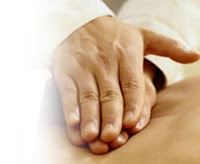 Hip pain; The myths of bursitis and overuse and how to feel normal again without drugs or injections.
Hip pain; The myths of bursitis and overuse and how to feel normal again without drugs or injections.
Have you experienced hip bursitis pain that does not self resolve, or resolve with traditional treatment approaches? The healthcare provider you see first can mean the difference between months of agony and a litany of secondary problems or effective fast relief. Hip bursitis treatment is often ineffective because where you hurt is often not why you hurt. We are now learning that many treatments such as shoulder impingement surgery or meniscus surgery for the knee are often ineffective for the same reasons.
Depending on what you read, hip pain can be caused by your IT band, or an inflamed bursa on top of the hip, or the muscles in the buttock. If you believe that these structures alone are making you hurt, you are about to make the same mistake most doctors and therapists make. While there are numerous articles on the internet regarding these symptoms, most show little understanding for why you hurt and will likely lead you to the wrong providers to help you resolve your problem. With today’s healthcare deductibles and high copayments, we can reduce physical and financial suffering with the right choice of provider.
If you have ever watched people walk in the park, people come in all shapes and sizes and some of them have oddities in how they walk. Some may sway, others may drop a hip while others may not move their upper body as they take their next step. It is possible that you may also have some of these same traits which is resulting in hip pain. These are some of the many clues we look for to understand why you hurt.
Relieving hip pain is not about injections, or exercises, or a medication you may have been given by your doctor or therapist. It is about symmetry, proper walking form, and how the brain has accommodated how and why you walk a certain way. Treating the site of pain while desirable, is often not going to resolve the problem, and may result in secondary symptoms in the back and leg from prolonged periods of limping or poor gait mechanics.
To resolve a painful hip, your healthcare provider must evaluate the following:
- Squatting ability
- How you walk
- Your feet
- Your pelvis
- Your overall flexibility.
Understanding muscular power and how the firing patterns of the leg are working is the most effective way to determine why you hurt. A firing pattern is determined by the myofascia which controls movement, not the muscles.
An active evaluation can help determine body patterns and mechanical aberrations causing the legs to tighten. The difference between an active evaluation and a passive evaluation of the painful part can be the difference between resolving your problem and having more expensive tests done after rehabilitation fails to improve your problem.
I have personally treated patients who after months of therapy could not stand with some light pressure on their shoulders. If you are wondering what the treatment they previously had was supposed to do, so was I. With the proper active approach, most patients with healthy knees, hips, and ankles can stand up with pressure on their shoulders without a problem. The lack of ability to stand will load muscular insertions which is the most common reason for a painful hip.
The most effective treatment is determined by the most effective exam. We are all different in how we are built according to the book Cheating Mother Nature, what you need to know to beat chronic pain and there is no one size fits all solution. Treat – test – treat is the only effective personalized protocol since any intervention that is tried can then be tested for effectiveness to see if it was valuable to the person being treated after they were treated. A good practitioner will continue to use this protocol until the problem is resolved.
 Chiropractic sports physicians are your best first contact healthcare provider for the following reasons.
Chiropractic sports physicians are your best first contact healthcare provider for the following reasons.
- They will evaluate you holistically and will use active evaluation protocols which are patient-centered. Many are adopting treat – test – treat protocols to personalize the care to you. Their holistic approach looks at you, not just your symptoms.
- Myofascial release and other fascial techniques are often used by chiropractors to improve movement patterns which can quickly be shown to improve function.
- Manipulation of the spine and extremities can also improve gait function since an ankle or foot is not moving properly due to an old sprain or other developmental or overuse problem. Problems such as these can result in weak glutes, weak calves, and a tight IT band which can cause pain.
- Corrective exercises to restore core stability and improve movement patterns.
- Foot orthotics if needed to level out the hips.
Chiropractic Sports Physicians are the best-trained providers for the musculoskeletal system and do not prescribe drugs, which can be harmful, addictive, or adversely affect the healing process. They also understand gait mechanics, important for resolving gait-related problems like hip pain. Chiropractic sports physicians are one-stop shopping for most musculoskeletal problems. By assuming the role of primary care for musculoskeletal problems, an area poorly addressed by the practice of medicine, many MRI, rehabilitation protocols, surgeries, and medications can be avoided by a comprehensive approach that does not fragment your care. Your collective cost will be markedly lower while your results are likely to be better with comprehensive care.
Book online today using this link.